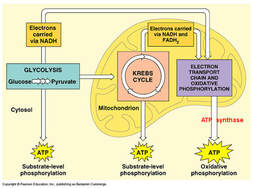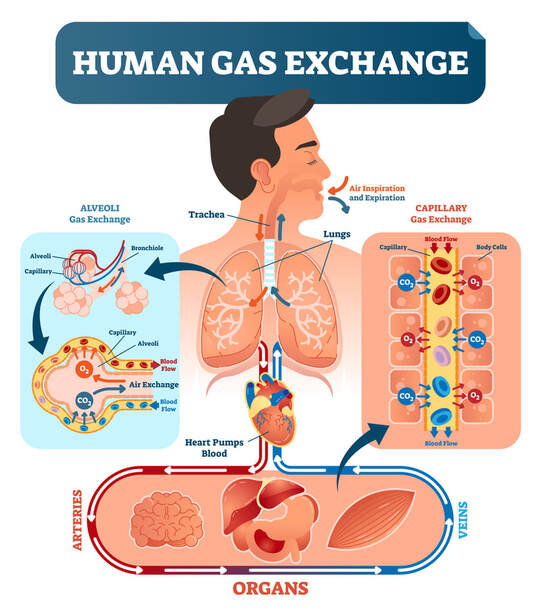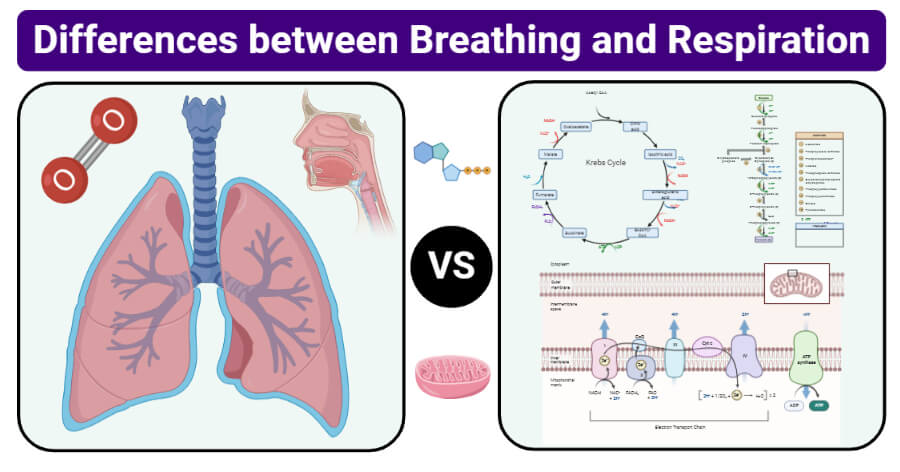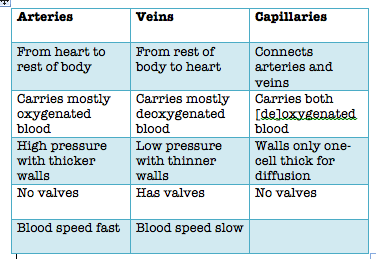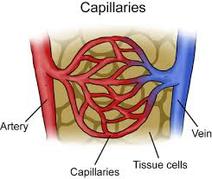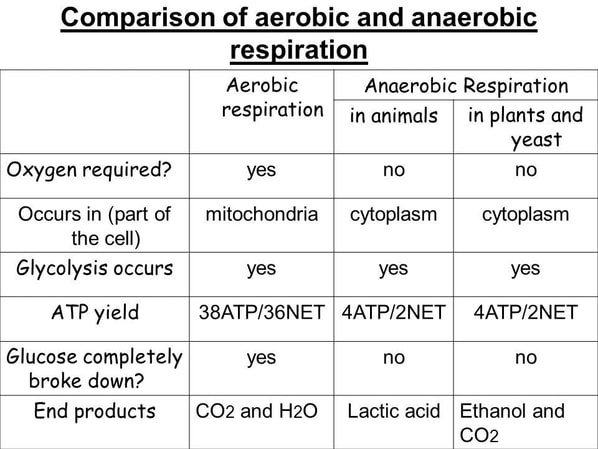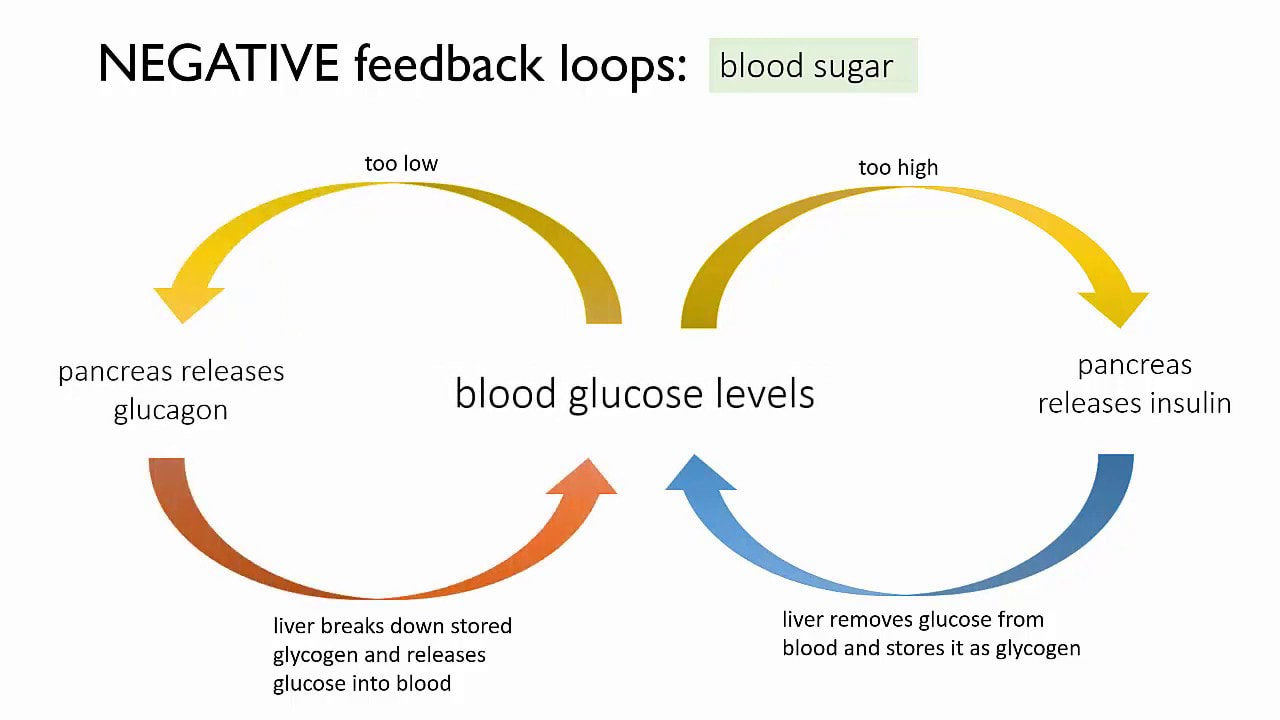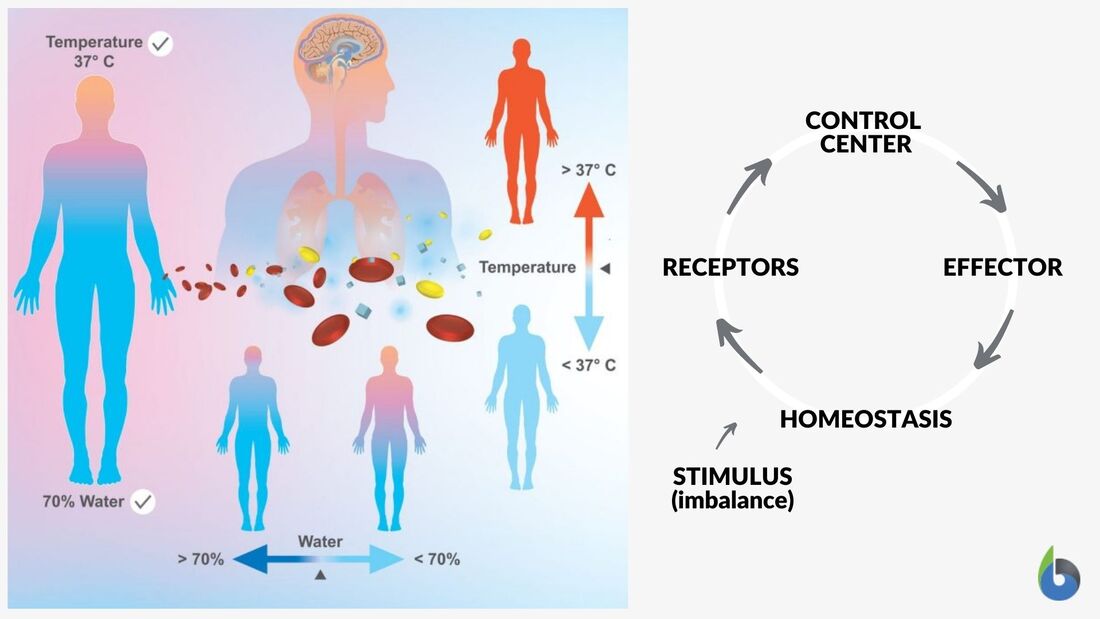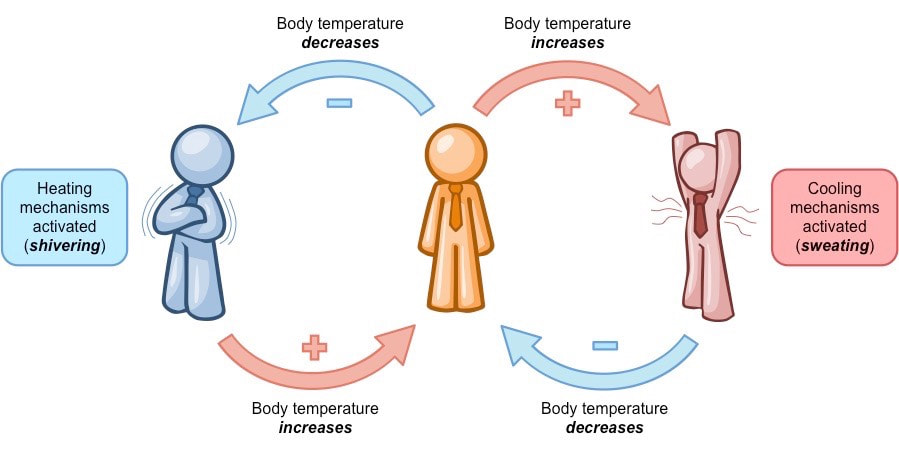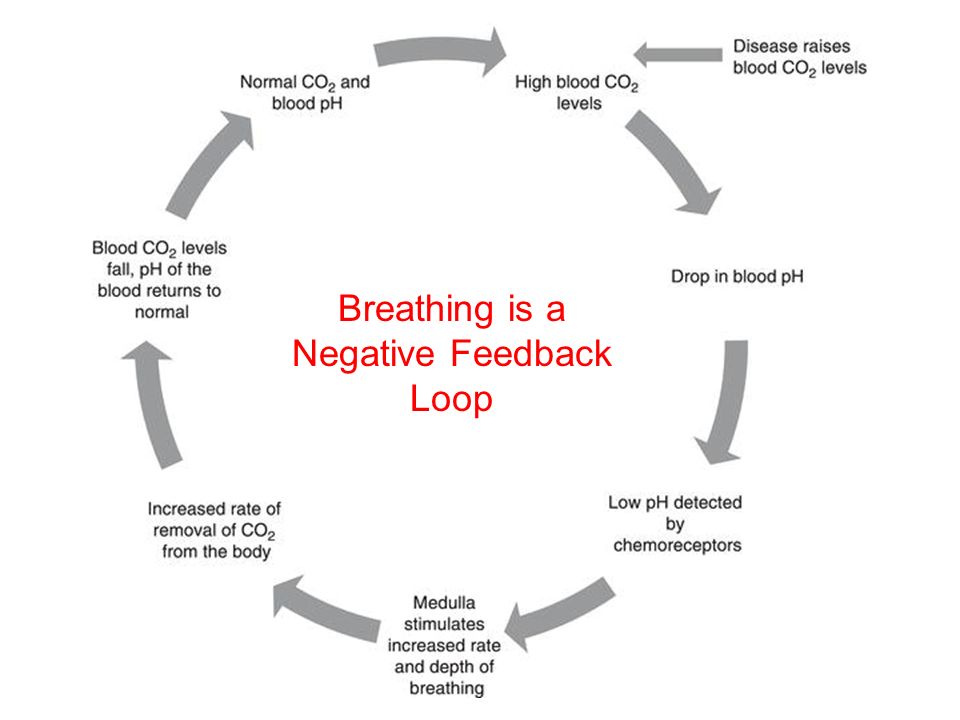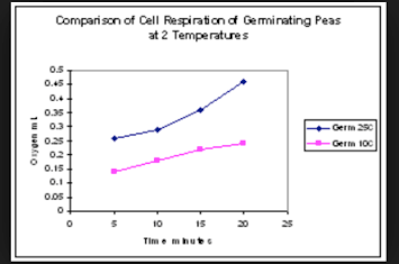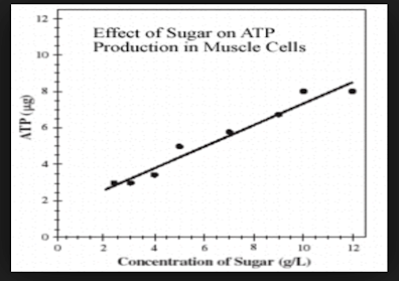topic 1: gas exchange and cellular respiration
|
Some organisms, such as plants, can trap the energy in sunlight through photosynthesis and store it in the chemical bonds of carbohydrate molecules. The principal carbohydrate formed through photosynthesis is glucose. Other types of organisms, such as animals, fungi, many protozoa, and a large portion of bacteria, are unable to perform this process. Therefore, these organisms must rely on the carbohydrates formed in plants to obtain the energy necessary for their metabolic processes
|
Describe the role of the respiratory system in supplying oxygen and removing carbon dioxide from the body, and explain how gas exchange is linked to cellular respiration.
Describe: Give a detailed account
Describe: Give a detailed account
The process of gas exchange in the respiratory system involves the exchange of gases (oxygen and carbon dioxide) between the air and the blood. This process occurs in the lungs, which are the primary organs of the respiratory system.
When we breathe in, air enters our body through the nose or mouth and travels down the trachea (windpipe) and into the lungs. The lungs are divided into smaller and smaller airways called bronchi, bronchioles, and finally, the smallest structures called alveoli.
The alveoli are tiny sacs that are surrounded by capillaries, which are small blood vessels. It is in the alveoli where gas exchange occurs. Oxygen from the air we breathe diffuses into the capillaries, where it binds to hemoglobin molecules in red blood cells. At the same time, carbon dioxide from the blood diffuses into the alveoli, where it can be exhaled out of the body.
The role of the lungs in gas exchange is to bring in air containing oxygen and remove air containing carbon dioxide. The alveoli play a critical role in gas exchange because they provide a large surface area for diffusion to occur. The capillaries surrounding the alveoli provide a network of blood vessels for the transport of gases to and from the lungs.
The respiratory system is responsible for supplying oxygen to the body and removing carbon dioxide, which is a waste product of cellular respiration. The respiratory system consists of several organs, including the lungs, bronchi, trachea, and alveoli.
When we breathe in, air enters our body through the nose or mouth and travels down the trachea (windpipe) and into the lungs. The lungs are divided into smaller and smaller airways called bronchi, bronchioles, and finally, the smallest structures called alveoli.
The alveoli are tiny sacs that are surrounded by capillaries, which are small blood vessels. It is in the alveoli where gas exchange occurs. Oxygen from the air we breathe diffuses into the capillaries, where it binds to hemoglobin molecules in red blood cells. At the same time, carbon dioxide from the blood diffuses into the alveoli, where it can be exhaled out of the body.
The role of the lungs in gas exchange is to bring in air containing oxygen and remove air containing carbon dioxide. The alveoli play a critical role in gas exchange because they provide a large surface area for diffusion to occur. The capillaries surrounding the alveoli provide a network of blood vessels for the transport of gases to and from the lungs.
The respiratory system is responsible for supplying oxygen to the body and removing carbon dioxide, which is a waste product of cellular respiration. The respiratory system consists of several organs, including the lungs, bronchi, trachea, and alveoli.
Distinguish between ventilation and respiration
Distinguish: Make clear the differences between two or more concepts or items
Distinguish: Make clear the differences between two or more concepts or items
Ventilation refers to the mechanical process of breathing, which involves the movement of air in and out of the lungs. This process includes the inhalation of oxygen-rich air into the lungs and the exhalation of carbon dioxide-rich air out of the lungs. Ventilation is primarily controlled by the respiratory muscles, which include the diaphragm and intercostal muscles.
Respiration, on the other hand, refers to the chemical process that occurs within the cells of the body. Cellular respiration is the process by which cells break down glucose and other nutrients to produce energy in the form of ATP (adenosine triphosphate) and release carbon dioxide as a waste product. This process occurs in the mitochondria of the cells and is essential for the functioning of all living organisms.
Respiration, on the other hand, refers to the chemical process that occurs within the cells of the body. Cellular respiration is the process by which cells break down glucose and other nutrients to produce energy in the form of ATP (adenosine triphosphate) and release carbon dioxide as a waste product. This process occurs in the mitochondria of the cells and is essential for the functioning of all living organisms.
Describe the structure of the heart and how it functions
Describe: Give a detailed account
Describe: Give a detailed account
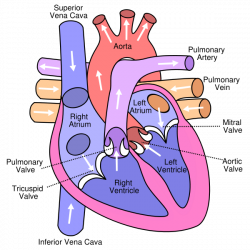
The human heart is a hollow, upside-down, pear-shaped shell. The inside of the heart is divided into four chambers, the left and right atria and the left and right ventricles, which periodically fill with blood and empty.
The two atria form the curved top of the heart. The ventricles meet at the bottom of the heart to form a pointed base which points toward the left side of the chest. The left ventricle contracts most forcefully, so the heart beat is felt most strongly on the left side of the chest.
A wall, called the septum, separates the right and left sides of the heart. A valve connects each atrium to the ventricle below it. The mitral or bicuspid valve connects the left atrium with the left ventricle. The tricuspid valve connects the right atrium with the right ventricle.
The two atria form the curved top of the heart. The ventricles meet at the bottom of the heart to form a pointed base which points toward the left side of the chest. The left ventricle contracts most forcefully, so the heart beat is felt most strongly on the left side of the chest.
A wall, called the septum, separates the right and left sides of the heart. A valve connects each atrium to the ventricle below it. The mitral or bicuspid valve connects the left atrium with the left ventricle. The tricuspid valve connects the right atrium with the right ventricle.
Compare and contrast the structure of arteries, veins and capillaries
Compare and contrast: Give an account of the similarities and differences between two (or more) items or situations, referring to both (all) of them throughout.
Compare and contrast: Give an account of the similarities and differences between two (or more) items or situations, referring to both (all) of them throughout.
Distinguish between anaerobic and aerobic respiration
Distinguish: Make clear the differences between two or more concepts or items.
Distinguish: Make clear the differences between two or more concepts or items.
There are two types of cellular respiration: aerobic and anaerobic. One occurs in the presence of oxygen (aerobic), and one occurs in the absence of oxygen (anaerobic). Both begin with glycolysis - the splitting of glucose.
Some organisms are able to continually convert energy without the presence of oxygen. They undergo glycolysis, followed by the anaerobic process of fermentation to make ATP. Muscle cells can continue to produce ATP when oxygen runs low using lactic acid fermentation. However, this often results in muscle fatigue and pain. Many yeast use alcoholic fermentation to produce ethanol. For this reason, humans have domesticated yeast to use for many commercial purposes including baking as well as beer and wine production.
Advantages of Aerobic Respiration
A major advantage of aerobic respiration is the amount of energy it releases. Without oxygen, organisms can split glucose into just two molecules of pyruvate. This releases only enough energy to make two ATP molecules. With oxygen, organisms can break down glucose all the way to carbon dioxide. This releases enough energy to produce up to 38 ATP molecules. Thus, aerobic respiration releases much more energy than anaerobic respiration.
The amount of energy produced by aerobic respiration may explain why aerobic organisms came to dominate life on Earth. It may also explain how organisms were able to become multicellular and increase in size.
Advantages of Anaerobic Respiration
One advantage of anaerobic respiration, also known as fermentation, is obvious. It lets organisms live in places where there is little or no oxygen. Such places include deep water, soil, and the digestive tracts of animals such as humans Another advantage of anaerobic respiration is its speed. It produces ATP very quickly. For example, it lets your muscles get the energy they need for short bursts of intense activity such as a sprint. Aerobic respiration, on the other hand, produces ATP more slowly
Some organisms are able to continually convert energy without the presence of oxygen. They undergo glycolysis, followed by the anaerobic process of fermentation to make ATP. Muscle cells can continue to produce ATP when oxygen runs low using lactic acid fermentation. However, this often results in muscle fatigue and pain. Many yeast use alcoholic fermentation to produce ethanol. For this reason, humans have domesticated yeast to use for many commercial purposes including baking as well as beer and wine production.
Advantages of Aerobic Respiration
A major advantage of aerobic respiration is the amount of energy it releases. Without oxygen, organisms can split glucose into just two molecules of pyruvate. This releases only enough energy to make two ATP molecules. With oxygen, organisms can break down glucose all the way to carbon dioxide. This releases enough energy to produce up to 38 ATP molecules. Thus, aerobic respiration releases much more energy than anaerobic respiration.
The amount of energy produced by aerobic respiration may explain why aerobic organisms came to dominate life on Earth. It may also explain how organisms were able to become multicellular and increase in size.
Advantages of Anaerobic Respiration
One advantage of anaerobic respiration, also known as fermentation, is obvious. It lets organisms live in places where there is little or no oxygen. Such places include deep water, soil, and the digestive tracts of animals such as humans Another advantage of anaerobic respiration is its speed. It produces ATP very quickly. For example, it lets your muscles get the energy they need for short bursts of intense activity such as a sprint. Aerobic respiration, on the other hand, produces ATP more slowly
State the importance of oxygen and glucose in cellular respiration and explain how they are used to produce ATP (adenosine triphosphate).
Oxygen and glucose are two important molecules in cellular respiration. Oxygen is required as the final electron acceptor in the electron transport chain, which is a series of reactions that occur in the mitochondria of cells. Glucose is used as a source of energy that is converted into ATP through a series of enzymatic reactions.
During the process of cellular respiration, glucose is broken down into smaller molecules in a series of steps. The first step is glycolysis, which occurs in the cytoplasm of cells and does not require oxygen. In this process, glucose is converted into two molecules of pyruvate, producing a small amount of ATP and some electrons that are carried by NADH molecules.
If oxygen is available, the pyruvate molecules enter the mitochondria, where they undergo further reactions. The pyruvate is converted into acetyl-CoA, which enters the citric acid cycle, also known as the Krebs cycle. In this cycle, acetyl-CoA is broken down into carbon dioxide and electrons, which are carried by NADH and FADH2 molecules.
These electrons are then passed through the electron transport chain, a series of membrane-bound proteins that shuttle the electrons along, releasing energy as they do so. This energy is used to pump protons (H+) across the inner mitochondrial membrane, creating an electrochemical gradient. The flow of protons back across the membrane through the ATP synthase enzyme generates ATP, which is the main energy currency of the cell.
During the process of cellular respiration, glucose is broken down into smaller molecules in a series of steps. The first step is glycolysis, which occurs in the cytoplasm of cells and does not require oxygen. In this process, glucose is converted into two molecules of pyruvate, producing a small amount of ATP and some electrons that are carried by NADH molecules.
If oxygen is available, the pyruvate molecules enter the mitochondria, where they undergo further reactions. The pyruvate is converted into acetyl-CoA, which enters the citric acid cycle, also known as the Krebs cycle. In this cycle, acetyl-CoA is broken down into carbon dioxide and electrons, which are carried by NADH and FADH2 molecules.
These electrons are then passed through the electron transport chain, a series of membrane-bound proteins that shuttle the electrons along, releasing energy as they do so. This energy is used to pump protons (H+) across the inner mitochondrial membrane, creating an electrochemical gradient. The flow of protons back across the membrane through the ATP synthase enzyme generates ATP, which is the main energy currency of the cell.
Draw the input-output model for aerobic and anaerobic cellular respiration
Analyze the input-output model for cellular respiration, and identify the sources of energy (inputs) and waste products (outputs) at each stage.
The input-output model for cellular respiration describes the flow of matter and energy through the different stages of this metabolic process.
The sources of energy (inputs) for cellular respiration are glucose, which is broken down into smaller molecules in glycolysis, and oxygen, which serves as the final electron acceptor in the electron transport chain. The waste products (outputs) of cellular respiration are carbon dioxide and water, which are produced during the citric acid cycle and the electron transport chain, respectively. ATP is the primary output of cellular respiration and is produced through the process of oxidative phosphorylation, which uses the energy generated by the electron transport chain to produce ATP from ADP and phosphate groups.
The sources of energy (inputs) for cellular respiration are glucose, which is broken down into smaller molecules in glycolysis, and oxygen, which serves as the final electron acceptor in the electron transport chain. The waste products (outputs) of cellular respiration are carbon dioxide and water, which are produced during the citric acid cycle and the electron transport chain, respectively. ATP is the primary output of cellular respiration and is produced through the process of oxidative phosphorylation, which uses the energy generated by the electron transport chain to produce ATP from ADP and phosphate groups.
Compare and contrast the input-output models for aerobic and anaerobic respiration, and explain how they are adapted to different conditions and energy requirements.
Compare and contrast: Give an account of the similarities and differences between two (or more) items or situations, referring to both (all) of them throughout.
Compare and contrast: Give an account of the similarities and differences between two (or more) items or situations, referring to both (all) of them throughout.
The input-output models for aerobic and anaerobic respiration are different due to the conditions and energy requirements of each process. Here is a comparison of the two models:
Aerobic Respiration:
Inputs: Glucose, Oxygen
Outputs: Carbon dioxide, water, ATP
Aerobic respiration is the process by which glucose is broken down to produce ATP in the presence of oxygen. It involves four main stages: glycolysis, pyruvate oxidation, the citric acid cycle, and oxidative phosphorylation. Aerobic respiration is highly efficient and produces a large amount of ATP per glucose molecule. This makes it the primary source of energy for most eukaryotic organisms.
Anaerobic Respiration:
Inputs: Glucose
Outputs: Lactic acid (in animals), ethanol and carbon dioxide (in plants and some microorganisms), ATP
Anaerobic respiration is the process by which glucose is broken down to produce ATP in the absence of oxygen. It involves only the first two stages of aerobic respiration: glycolysis and pyruvate oxidation. Without oxygen, the pyruvate molecule cannot enter the citric acid cycle and instead is converted into either lactic acid (in animals) or ethanol and carbon dioxide (in plants and some microorganisms). Anaerobic respiration is much less efficient than aerobic respiration, producing only a small amount of ATP per glucose molecule. However, it is a useful backup process when oxygen is not available.
The differences between the input-output models for aerobic and anaerobic respiration reflect the different conditions and energy requirements of each process. Aerobic respiration requires oxygen to be present, as it is the final electron acceptor in the electron transport chain, which produces ATP. Aerobic respiration is highly efficient and produces a large amount of ATP per glucose molecule. This makes it the primary source of energy for most eukaryotic organisms.
Anaerobic respiration, on the other hand, occurs in the absence of oxygen and is much less efficient than aerobic respiration. It produces only a small amount of ATP per glucose molecule but is useful as a backup process when oxygen is not available. In animals, anaerobic respiration produces lactic acid, which can build up and cause muscle fatigue. In plants and some microorganisms, anaerobic respiration produces ethanol and carbon dioxide, which can be useful for fermentation and other industrial processes.
Aerobic Respiration:
Inputs: Glucose, Oxygen
Outputs: Carbon dioxide, water, ATP
Aerobic respiration is the process by which glucose is broken down to produce ATP in the presence of oxygen. It involves four main stages: glycolysis, pyruvate oxidation, the citric acid cycle, and oxidative phosphorylation. Aerobic respiration is highly efficient and produces a large amount of ATP per glucose molecule. This makes it the primary source of energy for most eukaryotic organisms.
Anaerobic Respiration:
Inputs: Glucose
Outputs: Lactic acid (in animals), ethanol and carbon dioxide (in plants and some microorganisms), ATP
Anaerobic respiration is the process by which glucose is broken down to produce ATP in the absence of oxygen. It involves only the first two stages of aerobic respiration: glycolysis and pyruvate oxidation. Without oxygen, the pyruvate molecule cannot enter the citric acid cycle and instead is converted into either lactic acid (in animals) or ethanol and carbon dioxide (in plants and some microorganisms). Anaerobic respiration is much less efficient than aerobic respiration, producing only a small amount of ATP per glucose molecule. However, it is a useful backup process when oxygen is not available.
The differences between the input-output models for aerobic and anaerobic respiration reflect the different conditions and energy requirements of each process. Aerobic respiration requires oxygen to be present, as it is the final electron acceptor in the electron transport chain, which produces ATP. Aerobic respiration is highly efficient and produces a large amount of ATP per glucose molecule. This makes it the primary source of energy for most eukaryotic organisms.
Anaerobic respiration, on the other hand, occurs in the absence of oxygen and is much less efficient than aerobic respiration. It produces only a small amount of ATP per glucose molecule but is useful as a backup process when oxygen is not available. In animals, anaerobic respiration produces lactic acid, which can build up and cause muscle fatigue. In plants and some microorganisms, anaerobic respiration produces ethanol and carbon dioxide, which can be useful for fermentation and other industrial processes.
Draw the chemical equation of aerobic and anaerobic respiration
Draw: Represent by means of a labelled, accurate diagram or graph, using a pencil. A ruler (straight edge) should be used for straight lines. Diagrams should be drawn to scale. Graphs should have points correctly plotted (if appropriate) and joined in a straight line or smooth curve.
Draw: Represent by means of a labelled, accurate diagram or graph, using a pencil. A ruler (straight edge) should be used for straight lines. Diagrams should be drawn to scale. Graphs should have points correctly plotted (if appropriate) and joined in a straight line or smooth curve.
Distinguish between fermentation and cellular respiration.
Distinguish: Make clear the differences between two or more concepts or items.
Distinguish: Make clear the differences between two or more concepts or items.
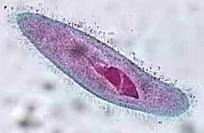 image from faculty.clintoncc.suny.edu
image from faculty.clintoncc.suny.edu
Fermentation and cellular respiration are two processes that cells can use to generate energy, but they differ in several ways.
Fermentation:
Fermentation is an anaerobic process that occurs in the absence of oxygen.
Fermentation does not use the electron transport chain, and instead relies on glycolysis to produce ATP.
Fermentation produces only a small amount of ATP per glucose molecule.
Fermentation produces waste products such as lactic acid (in animals) or ethanol and carbon dioxide (in plants and some microorganisms).
Fermentation is less efficient than cellular respiration and is typically used by cells when oxygen is not available.
Cellular Respiration:
Cellular respiration is an aerobic process that requires oxygen.
Cellular respiration uses the electron transport chain to generate ATP, which produces a large amount of ATP per glucose molecule.
Cellular respiration produces carbon dioxide and water as waste products.
Cellular respiration is highly efficient and is the primary source of energy for most eukaryotic organisms.
Fermentation:
Fermentation is an anaerobic process that occurs in the absence of oxygen.
Fermentation does not use the electron transport chain, and instead relies on glycolysis to produce ATP.
Fermentation produces only a small amount of ATP per glucose molecule.
Fermentation produces waste products such as lactic acid (in animals) or ethanol and carbon dioxide (in plants and some microorganisms).
Fermentation is less efficient than cellular respiration and is typically used by cells when oxygen is not available.
Cellular Respiration:
Cellular respiration is an aerobic process that requires oxygen.
Cellular respiration uses the electron transport chain to generate ATP, which produces a large amount of ATP per glucose molecule.
Cellular respiration produces carbon dioxide and water as waste products.
Cellular respiration is highly efficient and is the primary source of energy for most eukaryotic organisms.
Explain how cellular respiration produces ATP from glucose and other molecules with high potential energy.
Explain: Give a detailed account including reasons or causes.
Explain: Give a detailed account including reasons or causes.
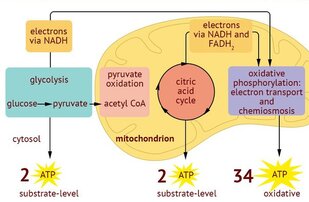 image from www.createwebquest.com
image from www.createwebquest.com
Cellular respiration produces ATP from glucose and other molecules with high potential energy by breaking them down in a series of enzymatic reactions. The energy released during these reactions is used to generate ATP through the process of oxidative phosphorylation, which requires oxygen as the final electron acceptor. By producing ATP, cellular respiration provides the energy needed for all cellular processes, including growth, maintenance, and reproduction.
Evaluate the impact of external factors (such as exercise or altitude) on gas exchange and cellular respiration
Exercise:
During exercise, the body's demand for oxygen increases due to increased metabolic activity in the muscles. To meet this demand, the respiratory system must work harder to bring in more oxygen and remove more carbon dioxide. This is achieved by increasing the rate and depth of breathing, which increases the volume of air exchanged in the lungs. Additionally, the heart rate and stroke volume increase, leading to a greater delivery of oxygen to the tissues.
Regular exercise can also lead to adaptations in the respiratory and cardiovascular systems, resulting in improved gas exchange and cellular respiration. These adaptations include an increase in lung capacity, an increase in the number of capillaries surrounding the alveoli, and an increase in the number of mitochondria in the muscles.
Altitude:
At high altitudes, the air pressure and oxygen concentration are lower, which makes it more difficult to obtain sufficient oxygen for cellular respiration. This can lead to symptoms such as shortness of breath, fatigue, and headache. To compensate, the body responds by increasing the rate and depth of breathing and by increasing the production of red blood cells, which carry oxygen from the lungs to the tissues.
Over time, the body can adapt to high altitude through a process called acclimatization. This involves an increase in the production of red blood cells, which increases the oxygen-carrying capacity of the blood. Additionally, the body may increase the number of capillaries surrounding the alveoli, which can increase the surface area for gas exchange
During exercise, the body's demand for oxygen increases due to increased metabolic activity in the muscles. To meet this demand, the respiratory system must work harder to bring in more oxygen and remove more carbon dioxide. This is achieved by increasing the rate and depth of breathing, which increases the volume of air exchanged in the lungs. Additionally, the heart rate and stroke volume increase, leading to a greater delivery of oxygen to the tissues.
Regular exercise can also lead to adaptations in the respiratory and cardiovascular systems, resulting in improved gas exchange and cellular respiration. These adaptations include an increase in lung capacity, an increase in the number of capillaries surrounding the alveoli, and an increase in the number of mitochondria in the muscles.
Altitude:
At high altitudes, the air pressure and oxygen concentration are lower, which makes it more difficult to obtain sufficient oxygen for cellular respiration. This can lead to symptoms such as shortness of breath, fatigue, and headache. To compensate, the body responds by increasing the rate and depth of breathing and by increasing the production of red blood cells, which carry oxygen from the lungs to the tissues.
Over time, the body can adapt to high altitude through a process called acclimatization. This involves an increase in the production of red blood cells, which increases the oxygen-carrying capacity of the blood. Additionally, the body may increase the number of capillaries surrounding the alveoli, which can increase the surface area for gas exchange
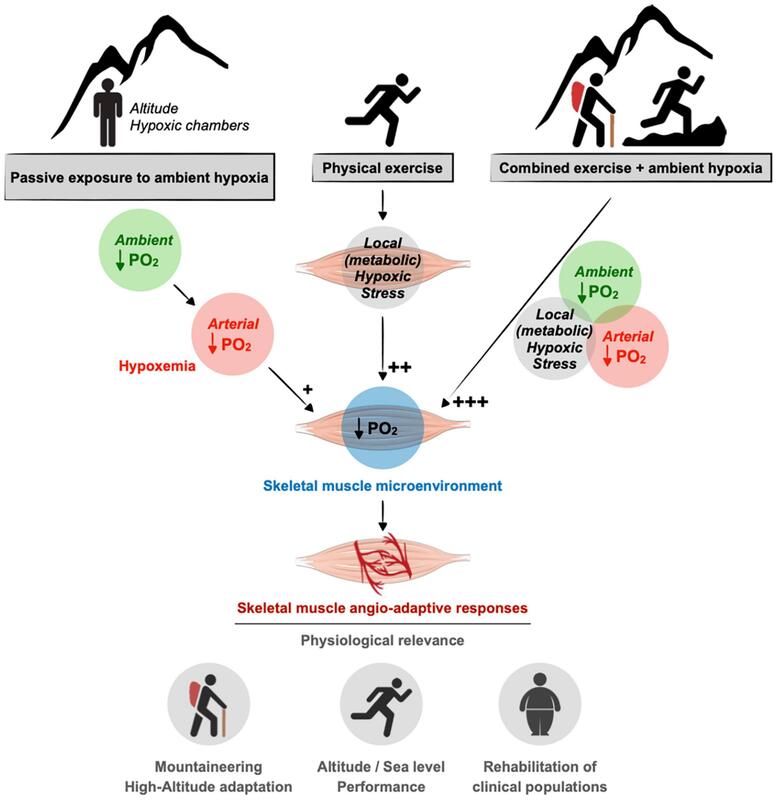 [Source: https://www.frontiersin.org/articles/10.3389/fphys.2021.735557/full]
[Source: https://www.frontiersin.org/articles/10.3389/fphys.2021.735557/full]
Define feedback mechanisms and explain their importance in maintaining homeostasis in living organisms.
Feedback mechanisms are physiological responses that allow living organisms to maintain homeostasis, which is the stable internal environment that is necessary for normal cell and organ function. These mechanisms involve a cycle of information, in which a stimulus (such as a change in temperature or blood glucose levels) is detected by sensors in the body, which send a signal to a control center that initiates a response to restore the body's internal environment to its optimal level.
The importance of feedback mechanisms in maintaining homeostasis cannot be overstated. Living organisms are exposed to a wide range of internal and external stimuli that can cause changes in their internal environment. Without feedback mechanisms, these changes could become extreme and potentially life-threatening. By detecting and responding to these changes, feedback mechanisms help to keep the body's internal environment within a narrow range that is optimal for normal cell and organ function.
The importance of feedback mechanisms in maintaining homeostasis cannot be overstated. Living organisms are exposed to a wide range of internal and external stimuli that can cause changes in their internal environment. Without feedback mechanisms, these changes could become extreme and potentially life-threatening. By detecting and responding to these changes, feedback mechanisms help to keep the body's internal environment within a narrow range that is optimal for normal cell and organ function.
Differentiate between positive and negative feedback mechanisms and provide examples of each.
There are two types of feedback mechanisms: positive and negative feedback.
Negative feedback mechanisms
Positive feedback mechanisms,
Negative feedback mechanisms
- work to counteract changes in the body's internal environment and restore it to its optimal level. For example, when blood glucose levels rise after a meal, the pancreas releases insulin, which stimulates the uptake of glucose by cells and lowers blood glucose levels.
Positive feedback mechanisms,
- amplify changes in the body's internal environment, leading to a rapid response. For example, during childbirth, the hormone oxytocin stimulates contractions, which in turn stimulate the release of more oxytocin, leading to more contractions and ultimately the birth of the baby.
Analyze the role of feedback mechanisms in regulating oxygen levels in the blood
Feedback mechanisms play a crucial role in regulating oxygen levels in the blood. The body's cells require a continuous supply of oxygen to carry out cellular respiration and produce energy, and the blood is responsible for transporting oxygen to the cells. When oxygen levels in the blood become too low, the body uses feedback mechanisms to increase oxygen delivery to the cells.
One of the key feedback mechanisms involved in regulating oxygen levels in the blood is the control of breathing. The respiratory system responds to changes in oxygen levels in the blood by increasing or decreasing the rate and depth of breathing. When oxygen levels in the blood decrease, sensors in the body detect the change and send a signal to the brainstem, which controls breathing. The brainstem then sends signals to the respiratory muscles, stimulating them to increase the rate and depth of breathing, which increases the amount of oxygen that enters the body
One of the key feedback mechanisms involved in regulating oxygen levels in the blood is the control of breathing. The respiratory system responds to changes in oxygen levels in the blood by increasing or decreasing the rate and depth of breathing. When oxygen levels in the blood decrease, sensors in the body detect the change and send a signal to the brainstem, which controls breathing. The brainstem then sends signals to the respiratory muscles, stimulating them to increase the rate and depth of breathing, which increases the amount of oxygen that enters the body
Explain how the factors that affect heart rate
Explain: Give a detailed account of causes, reasons or mechanisms
Explain: Give a detailed account of causes, reasons or mechanisms
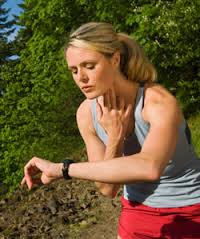
There are many factors that affect your heart rate. The heart rate can speed up or slow down because of stress, exercise, medication, trauma or illness. Even breathing can cause slight fluctuations in heart rate. Most of the time a person does not really think about changes in his heart rate.
Other factors that can affect heart rate
Other factors that can affect heart rate
- Air temperature: When temperatures (and the humidity) soar, the heart pumps a little more blood, so your pulse rate may increase, but usually no more than five to 10 beats a minute.
- Body position: Resting, sitting or standing, your pulse is usually the same. Sometimes as you stand for the first 15 to 20 seconds, your pulse may go up a little bit, but after a couple of minutes it should settle down. Emotions: If you’re stressed, anxious or “extraordinarily happy or sad” your emotions can raise your pulse.
- Body size: Body size usually doesn't usually change pulse. If you’re very obese, you might see a higher resting pulse than normal, but usually not more than 100.
- Medication use: Meds that block your adrenaline (beta blockers) tend to slow your pulse, while too much thyroid medication or too high of a dosage will raise it
- Digestion : In a digestive process, the intestines would require additional blood circulation and therefore a possible heart rate increase can be seen
Explain how adaptations of red blood cells, including shape, structure and the presence of haemoglobin, make them suitable for the transport of oxygen
Explain: Give a detailed account of causes, reasons or mechanisms
Explain: Give a detailed account of causes, reasons or mechanisms
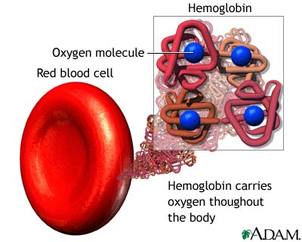
The oxygen carried in your red blood cells is stored in a special protein known as hemoglobin. A single hemoglobin molecule is made of four identical sub-units. Each sub-unit has a heme component, aglobin chain and an iron atom bound to the heme section. Red blood cells are completely lacking in most other common cellular parts, such as a nucleus with DNA, or mitochondria.
Oxygen is able to bind to each of the iron atoms, meaning that a single hemoglobin molecule is able to carry up to four oxygen molecules at its maximum capacity. Interestingly, the structure of hemoglobin makes it such that the more oxygen that is bound to one of the sub-units, the more other oxygen molecules are attracted to the remaining iron atoms.
Oxygen is able to bind to each of the iron atoms, meaning that a single hemoglobin molecule is able to carry up to four oxygen molecules at its maximum capacity. Interestingly, the structure of hemoglobin makes it such that the more oxygen that is bound to one of the sub-units, the more other oxygen molecules are attracted to the remaining iron atoms.
Use data and graphs to analyze the relationship between oxygen consumption and carbon dioxide production during physical activity, and explain how this reflects cellular respiration.
Key Terms:
|
surface area
SA:Volume ratio ATP glycolysis input-output model |
heart
blood vessels arteries veins |
capillaries
blood oxygenated deoxygenated |
aerobic
fermentation alcohol Kreb Cycle |
anaerobic
lactic acid glucose cytoplasm |
Useful Links:
Video Clips:
Video Clips:
This video shows how Paramecium eat. Paramecium is a genus of unicellular ciliate protozoa, commonly studied as a representative of the ciliate group. Its shape resembles that of a grain of rice. The cell ranges from about 50 to 350 �m in length (more or less one tenth of a millimetre) and is covered with simple cilia, allowing the cell to move at speeds of approximately 12 body lengths per second. The cilia act like oars and move in one direction.There is a deep oral groove containing inconspicuous tongue-like compound oral cilia (as found in other peniculids) used to draw food inside. In general, they feed on bacteria and other small cells, making them heterotrophs. Osmoregulation is carried out by a pair of contractile vacuoles, which actively expel water from the cell absorbed by osmosis from its surroundings.[1] They are relatively large protists and can easily be seen with a medium-power microscope.
Paramecia are widespread in freshwater environments, and are especially common in scums. Recently, some new species of Paramecium have been discovered in the oceans.
Certain single-cell eukaryotes such as Paramecium are examples for exceptions to the universality of the genetic code: in their translation systems a few codons differ from the standard ones.
Paramecia are widespread in freshwater environments, and are especially common in scums. Recently, some new species of Paramecium have been discovered in the oceans.
Certain single-cell eukaryotes such as Paramecium are examples for exceptions to the universality of the genetic code: in their translation systems a few codons differ from the standard ones.
For most of history, scientists weren't quite sure why our hearts were beating or even what purpose they served. Eventually, we realized that these thumping organs serve the vital task of pumping clean blood throughout the body. But how? Edmond Hui investigates how it all works by taking a closer look at the heart's highly efficient ventricle system
Hank takes us on a trip around the body - we follow the circulatory and respiratory systems as they deliver oxygen and remove carbon dioxide from cells, and help make it possible for our bodies to function.
How Bread Rises
Oxygen forms about 21% of the air around us. In your body, oxygen forms a vital role in the production of energy in most cells. But if gases can only efficiently diffuse across tiny distances, how does oxygen reach the cells deep inside your body? Enda Butler tracks the surprisingly complex journey of oxygen through your body
Take a journey into the lungs to see how the respiratory system and automatic nervous system work together to keep us alive and breathing.
Explore the process of aerobic cellular respiration and why ATP production is so important in this updated cellular respiration video by The Amoeba Sisters!
What happens when you can't do aerobic cellular respiration because oxygen isn't available? Explore fermentation with The Amoeba Sisters
Respiration is the chemical process that supplies the body with energy for all other life processes: growth and repair of cells, muscle contraction, protein synthesis, sending nerve impulses, absorbing molecules in active transport to name just a few.
Ever wondered why feel all stiff the day after doing lots of exercise, in order for you to contract your muscles they need the energy that is released in respiration. However, when you're doing heavy exercise for a long time the muscles can't always get the oxygen they need to carry out aerobic respiration.
This video covers the effects of exercise on the body, including details about respiration and the oxygen debt.
This video gives examples of negative feedback (temperature and blood glucose regulation) and positive feedback (events in childbirth).
Animals need oxygen to carry out aerobic respiration and they need to get rid of the waste product called carbon dioxide.
